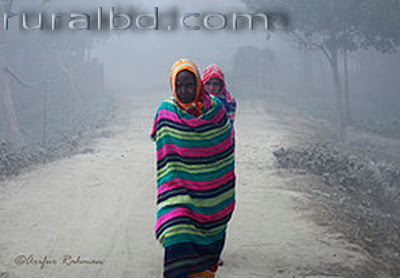 Dhaka is an ancient city which was first established in 1772. It is located at central Bangladesh and it is the economic, political and cultural center of the district and the country as a whole. It is a part of the Dhaka Division. Dhaka is the capital of Bangladesh, rests on the eastern banks of the Buriganga River which flows from the Turag to the south of the district. While Dhaka (city corporation) occupies only about a fifth of the area of this district. It shares borders with Narayanganj on the eastern part, Manikganj on the western part, Gazipur and Tangail on the northern side, Munshiganj and Rajbari on the southern part.
Dhaka is an ancient city which was first established in 1772. It is located at central Bangladesh and it is the economic, political and cultural center of the district and the country as a whole. It is a part of the Dhaka Division. Dhaka is the capital of Bangladesh, rests on the eastern banks of the Buriganga River which flows from the Turag to the south of the district. While Dhaka (city corporation) occupies only about a fifth of the area of this district. It shares borders with Narayanganj on the eastern part, Manikganj on the western part, Gazipur and Tangail on the northern side, Munshiganj and Rajbari on the southern part.
History of Dhaka:
In 1610 it was established as capital for the first time and named according to the name of emperor Jahangir as Jahangirnagar . Once upon a time Dhaka was ruled by the Hindu Kings. The Pala and the Sena dynasties ruled Dhaka for many years. It was not until early fourteenth century when the Muslim rulers began to come to Bengal. Dhaka was made the capital of Bengal in 1610 and Islam Khan renamed Dhaka as Jahangirnagar after the name of Emperor Jahangir. In the eighteenth century Dhaka lost political importance when Murshid Quli Khan transferred the capital of Bengal from Dhaka to Murshidabad. But Dhaka never lost its commercial importance.
Administration: Dhaka City Corporation is now divided into two part named Dhaka north and Dhaka South City Corporation and 03 municipalities outside of city area. It has 05 upazillas (sub-district) named Dhamrai, Dohar, Keranigonj, Nawabgonj and Saver outside of metro area. The mentioned sub- districts contain 79 union Parishad, and 1863 villages.
24 Thana of this District:
- Biman Bandar
- Badda
- Cantonment
- Dhanmondi
- Demra
- Kotwali
- Gulshan
- Hazaribagh
- Kafrul
- Kamringir Char
- Khilgaon
- Lalbagh
- Mugda
- Mirpur
- Mohammadpur
- Motijheel
- Pallabi
- Paltan
- Ramna
- Sabujbagh
- Shyampur
- Sutrapur
- Tejgaon
- Uttara
Population: The last known population of Dhaka district is 1,20,43,977 (Male- 65,55,792 and Female- 54,88,185), sex ratio 119:100, Population density 8229/Sq Km, annual growth rate 3.48%.
Literacy: Literacy Rate is 70.50% and School attendance rate is 47.30% for 5 to 24 years old.
- The post code of Dhaka is 1000 (GPO) and 1100 for Dhaka Sadar Post office.
- NWD code – 02
- Total parliament seats are 20.
- In the liberation war period Dhaka was under Sector No 02.
Major rivers of this districts are Burigonga, Dhaleshari, Shitalakha, Bongshi, Turag, Eshamoti, Balu-Nadi etc.
Persons to be remembered of this district:
- Nawab Sir Salimullah (Social Worker & Land Lord)
- Atul Proshad Sen (Poet)
- Nawab Abdul Goni (Land Lord)
- Nawab Ahsan Ullah(Land Lord)
- Kaykobad (Poet), Khaja Nazimuddin (Politician)
- Ranada Proshad Saha
- Samar Das(Singer)
- Kali Prosanna Shingha
- Dr. Anisuzzaman (Educationist),
- Girish Chandra Sen
- Khaja Abdul Goni etc.
Dhakeshwari National Temple
Lalbagh fort
National Parliament of Bangladesh
Places to See:
Lalbagh fort and the tomb of Bibi Pari (1668), bara katra (1641), chhota katra and the tomb of Bibi Champa (1663), Ancient Fort and the palace of the Nawab (Jail Hospital, 1638), ahsan manzil (1872), husaini dalan (1642), Binod Bibi Mosque (1456 AD), Seven Domed Mosque (1676), Chawk Mosque (1676), Bibi Meher Mosque (1814), Armanitola Mosque (1716), Khawja Shahbaj Mosque (1679), Shayesta Khan Mosque (1664-78), Khawja Ambar Mosque (1677-78), Moriam Saleh Mosque (1706), Sitara Begum Mosque (1815), Farruk Shayer Mosque (1703-1704), Tara Mosque, Azimpur Mosque (1746), Kartalab Khan Mosque (1700-1704), Holy Rosary Church (1678), Setara Begum Mosque (1819), Bagmara Math (Nawabganj), Home stead of Raja Harish Chandra (eighteenth century, Savar), Shree Shree Sani Ashram and Math (1199 AD), Dhakeshwari Mandir (eventeenth century), Jaykali Mondir, Bahadur Shah Park, Nimtali Deuri (Asiatic Society of Bangladesh, 1765).




























